A day in the pack ice – Spitsbergen
Pack ice east of Nordaustlandet, Spitsbergen – 9 August 2014
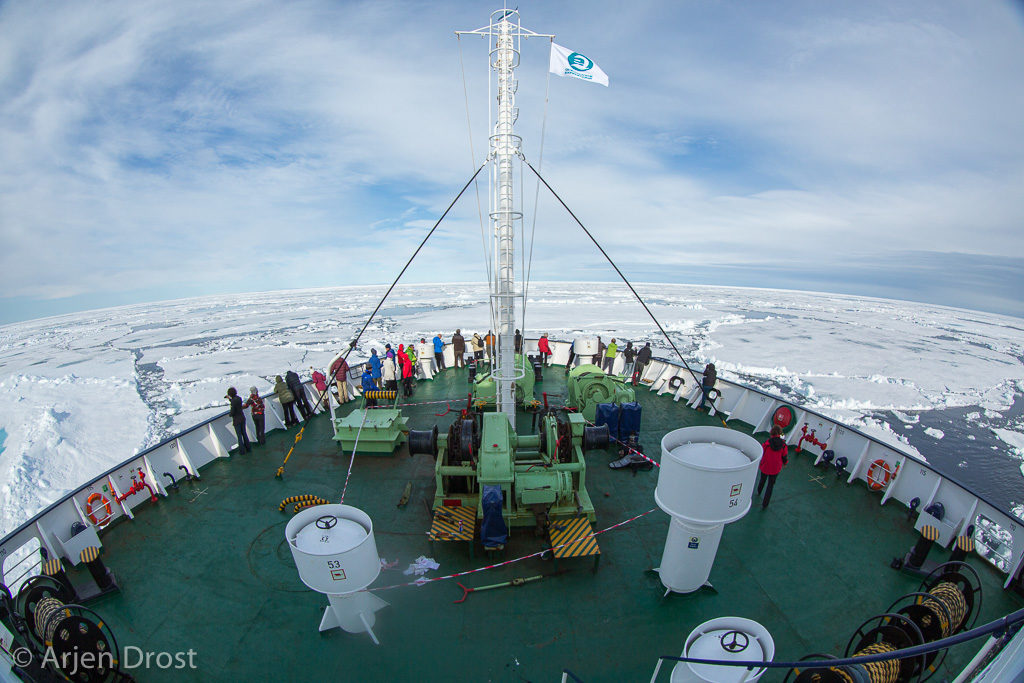
Ortelius in the pack ice
When I woke up this morning, we had just entered the pack ice. We usually try to find the ice north of Spitsbergen or Nordaustlandet, but this time we decided to sail first through Hinlopen, go south around Nordaustlandet and try to find the ice to the east of the second-largest island of the archipelago. I always love ice days. You don’t get a lot of movement as we spent all day on the ship, but it’s an exceptional experience to see ice stretching out towards the horizon, only broken by a few leads of open water. This time it’s a bit more special, as I’m for the first time on MV Ortelius, which is a much better ice-strengthened ship as the Plancius. I’m really curious what this ship can do in the ice…
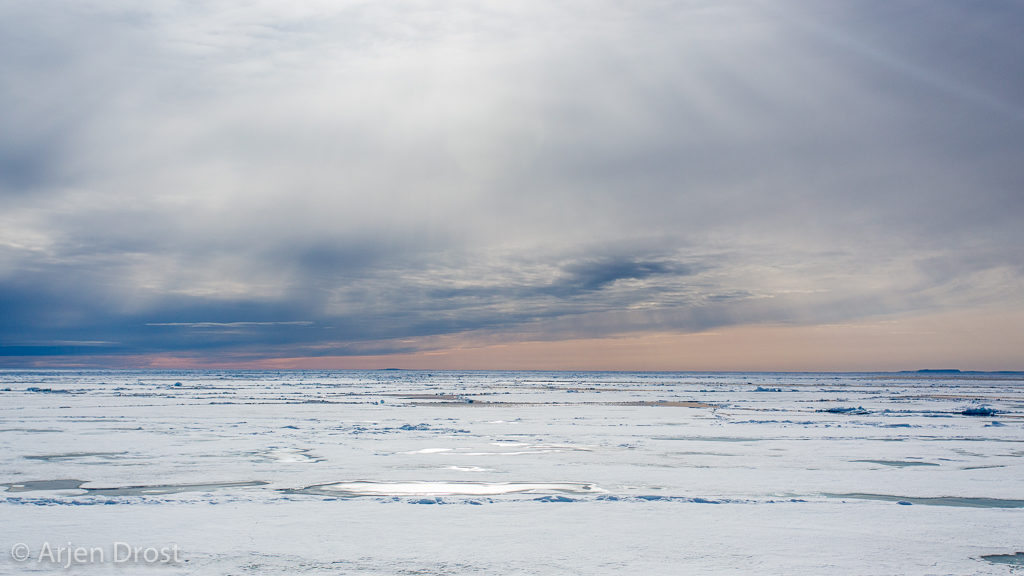
the pack ice
After a quick breakfast, I head to the bridge. After a bit of open drift ice, we soon reach the denser pack. It is compact, but not very thick. Nearly all ice we will see today will be one-year-old ice, thin enough for Ortelius to break through it. Now the big search starts. We made a schedule which has Polar Bear watch duty, and we always try to have at least two guides with binoculars scan the horizon all day. Sometimes it can take ages before we find a tiny yellowish-white blob. Not this day. Soon we see our first bear. At first, he is far away, just a small speck. At those moments, my place is somewhere on the outside decks. First to help the guests to find the bear. For the guides, who all have a lot of experience in finding bears and have good binoculars, this is relatively easy, but for the guests, it can be challenging. “What direction is it?” “How far away?” “Can I see it with my naked eye?” We try to find typical structures in the ice like pressure ridges, leads or different coloured ice floes to point the people in the right direction. Not an easy task as both the ship and the bear are moving… But slowly we come closer and closer. More and more people find it, and the first pictures are taken. The next question is what kind of bear it is. Polar Bears on the pack ice can roughly be divided into three groups: the bears that hate ships, the bears that love boats and the ones who couldn’t care less. The first ones are the ones we don’t want to see as they run away as soon as they see us. These are the most boring ones, and we leave them alone as soon as we realise they don’t like us. The second group is interested in the ship and come towards it to check it out. Polar Bears can be inquisitive and will often check out things that they don’t know. Of course, we will not feed bears, not only is this strictly forbidden, but it’s also unhealthy for the bears and can lead to dangerous situations in the future. The third group just keeps on doing what they want and don’t pay any attention to the ship.
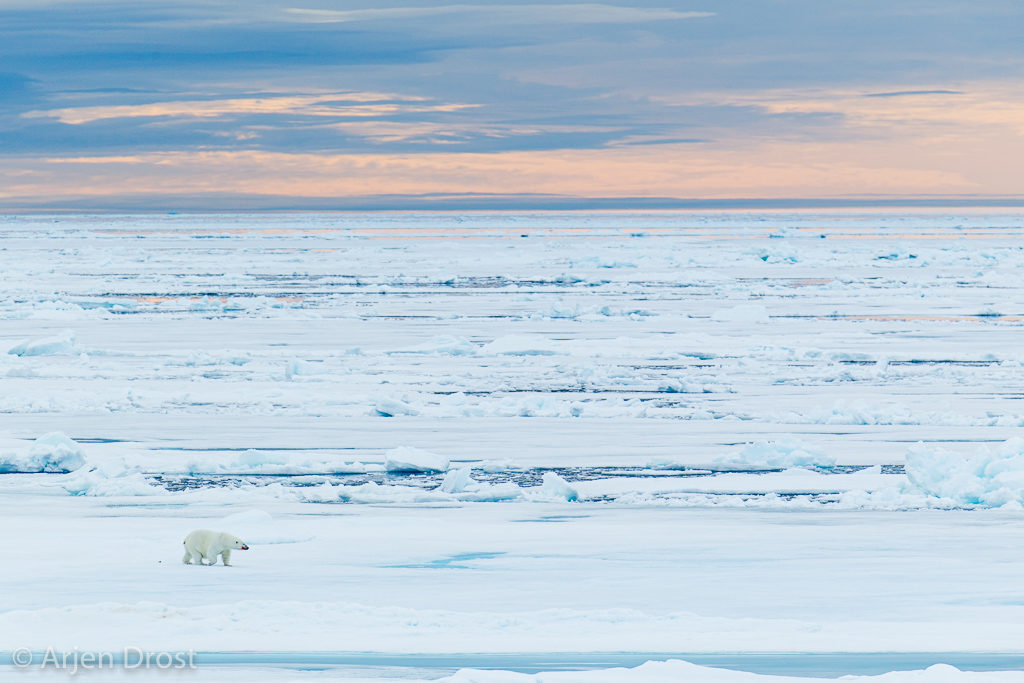
Polar Bear in the morning light
This first bear seems to have just finished a meal. There is still a bit of blood on his face. He is mildly interested in us but leaves us behind after a short visit. Not a bad start of the day! The rest of the morning, we keep on cruising through the ice, scanning the horizon for more bears or other animals. We find one more distant bear and several seals hauling out on the ice. This is good news as bears are always on the lookout for seals, their favourite food.
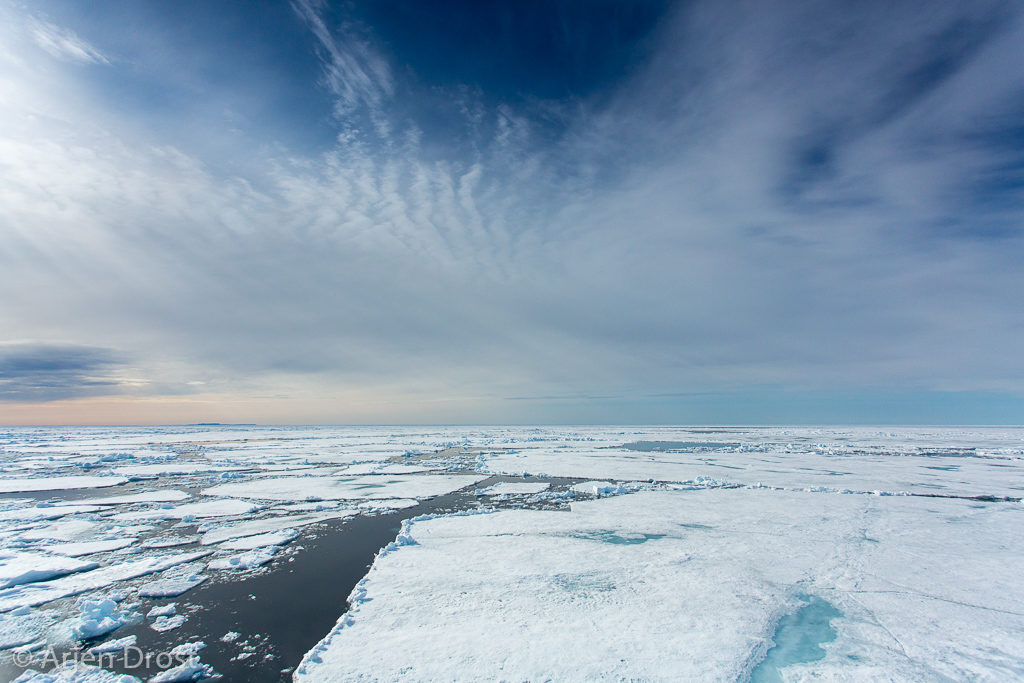
Pack ice
After lunch, we continue our search. I really love scouting and being on the bridge trying to find things, but it’s good that we made a schedule. The bright white ice and sunlight make it very difficult to keep your focus for a long time. Sometimes it’s good to do something different for a change… Sometimes we find other interesting things. We’ve already seen several Pomarine Skuas today, but most were just too far away for a picture. Poms don’t breed on Spitsbergen, but we sometimes see birds from the Siberian population on the east coast. Around 2 pm we have a few close to the ship, so I grab my camera and take a few flight shots. Nice to see them chase Kittiwakes and try to get their last eaten meal.
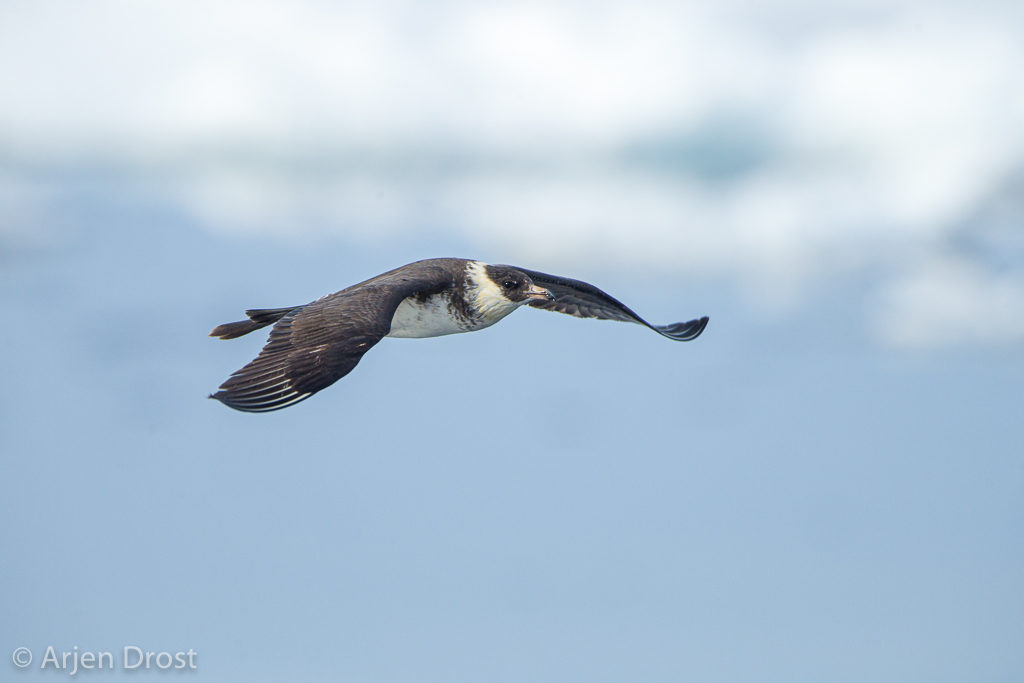
Pomarine Skua
While I do this, I hear over the radio that a new Polar Bear has been found. This, of course, has above some birds, so I try to find it. Soon I have the bear in sight. And a bit later another one was found. And something red… This looks promising! Soon all guests know where to watch as the captain carefully moves the ship closer and closer. As we come closer we see we indeed found a Polar Bear with a fresh kill. And other bears have found it as well! Polar Bears being solitary regularly do share their food. Jim, the expedition leader, decides to park the ship not far from the kill and just spent the rest of the day there. We’ll see what happens…
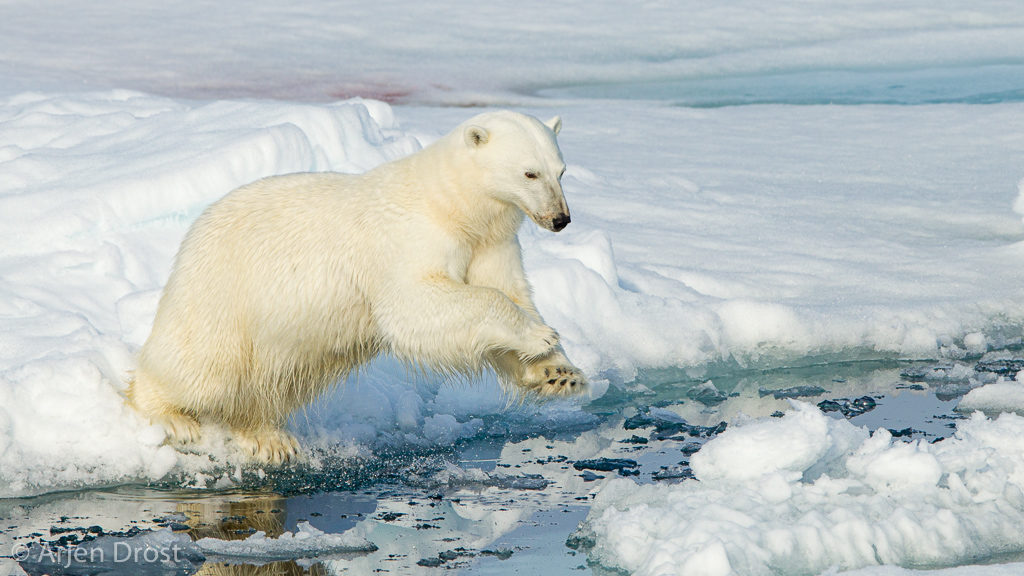
Jump!
It turned out to be an excellent choice. The weather was perfect, with sunshine and some clouds, nice dense pack ice and lots of wildlife around the ship. A dead seal always attracts other wildlife — Polar Bears of course, but also scavenging birds like Ivory and Glaucous Gulls. The smell of blood and the red spot on the snow works like a magnet on these birds. The first to arrive were the Ivory Gulls. There was a large group of them sitting on the ice, grabbing a bite whenever the bears let them. The maximum number was 28! Nice to see those pure white birds in these large numbers for such a long time. A little later, the Glaucous Gulls arrived. They are less daring and only feed off the carcass when the bears are not there.
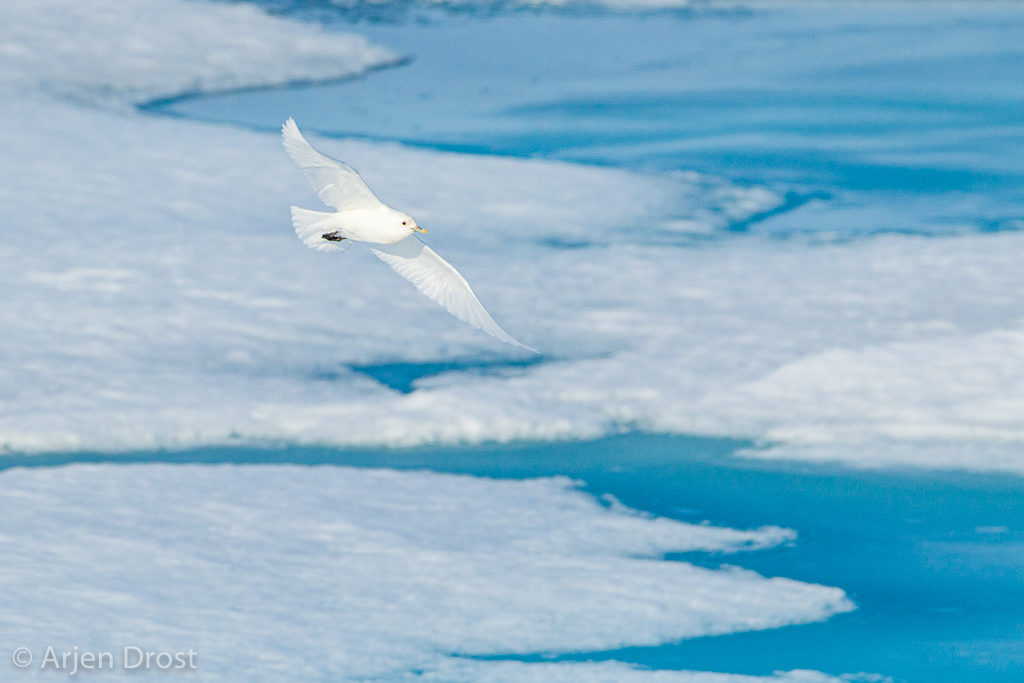
Ivory Gull
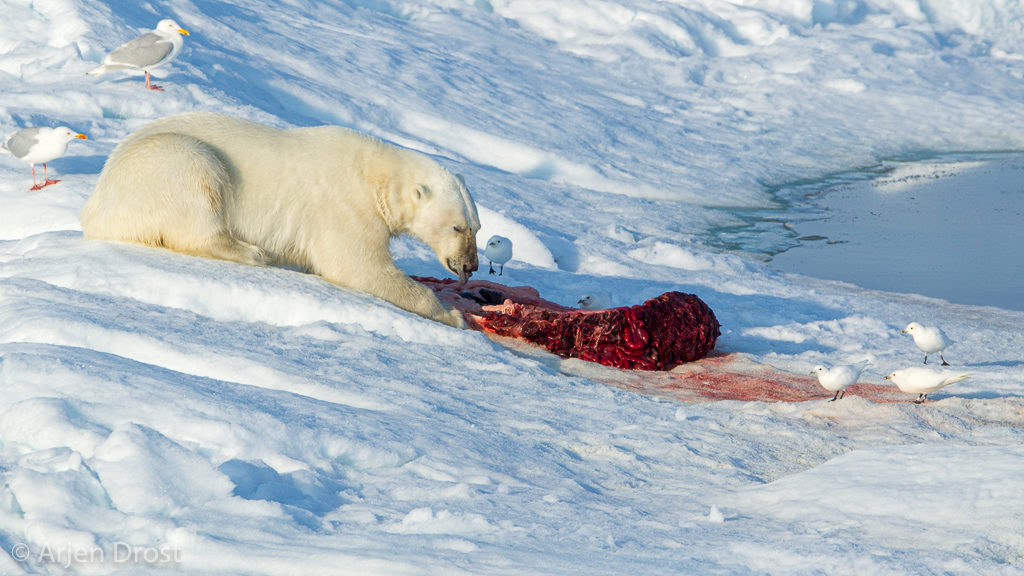
Kill, bear, Ivory and Glaucous Gulls.
And bears. More and more bears showed up, during the rest of the afternoon and the evening we had a total of 7 bears feeding off the carcass in different combinations. It was nice to see the interactions between the different bears. First, the big males were eating, later the younger males and females were allowed to feed. At the end of the evening all had enough, and they were feeding next to each other.
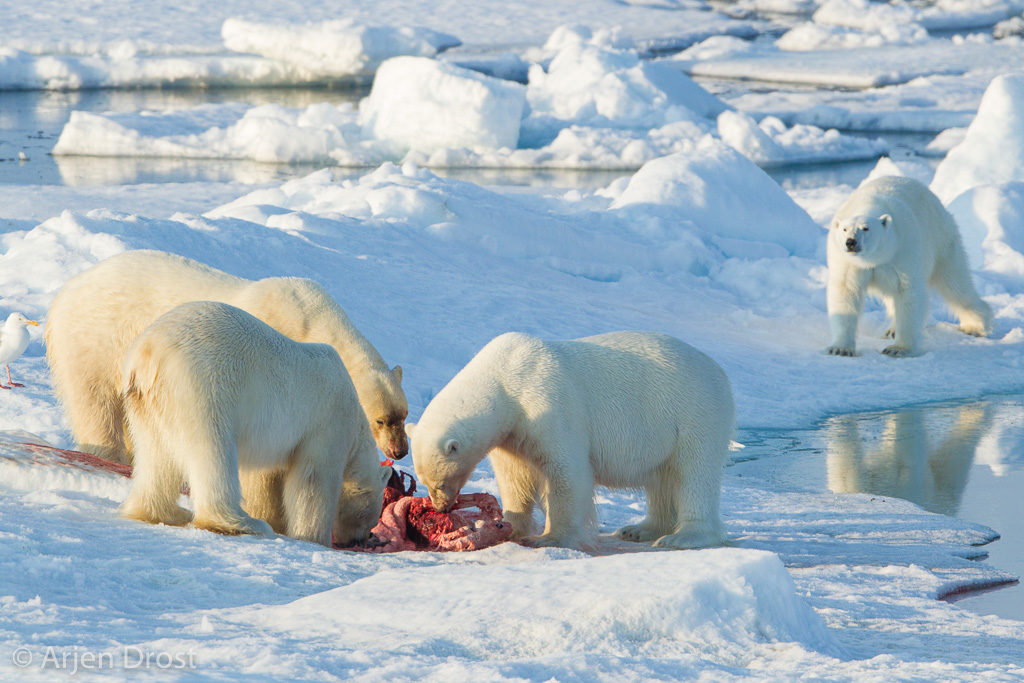
Feeding together
Dinner was an on deck BBQ. Who ever had a BBQ in the middle of the pack ice, under a clear blue sky with several Polar Bears near the ship having their own feast. For me, it was quite hard to focus on the food and the accompanying party with so much happening on the ice. As the sun was getting lower and lower near the horizon, the light was getting warmer and warmer. Usually this ‘golden hour’ is only seen an hour before sunset and an hour after sunrise. However, with the sun never setting this high in the Arctic, here these most favoured conditions for nature photographers last for several hours around midnight. With so many bears close to each other, there were several interactions between them. No real fights, but sometimes they had to settle a small dispute. Of course, many pictures were made again.
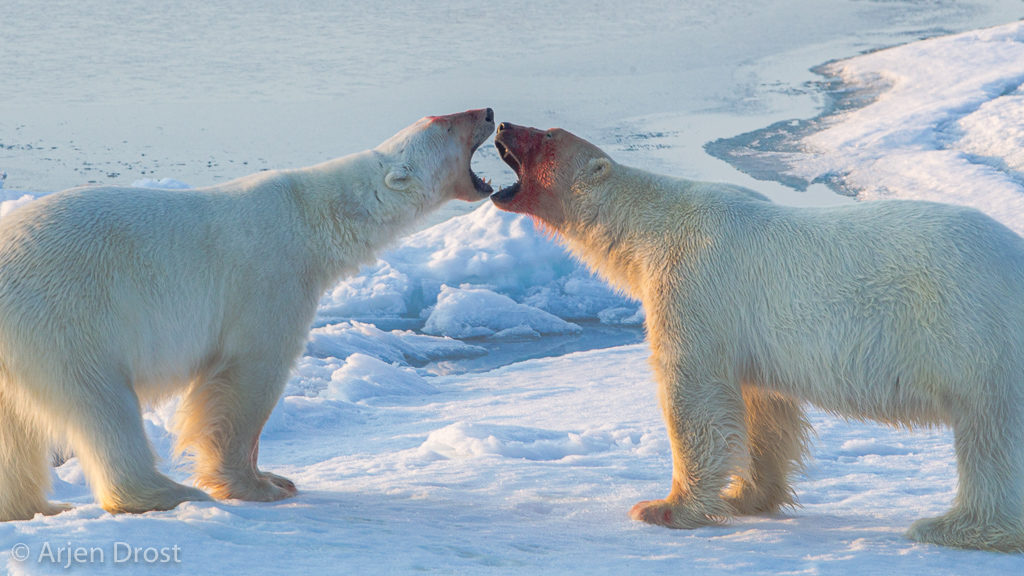
Interacting bears
Being curious animals, Polar Bears often check out unfamiliar objects to see if there is any food to be found. With our ship nearby the kill, bears regularly approached the ship. Some only being a few meters away from the ship. This brought everybody back out on the deck, as it allowed getting a real close look to these top predators. On land, you never want to see a close up Polar Bear, but from the safety of a ship, it’s no problem. For photographers, this gave the possibility to take close-ups or wide-angle shots that would otherwise be impossible.
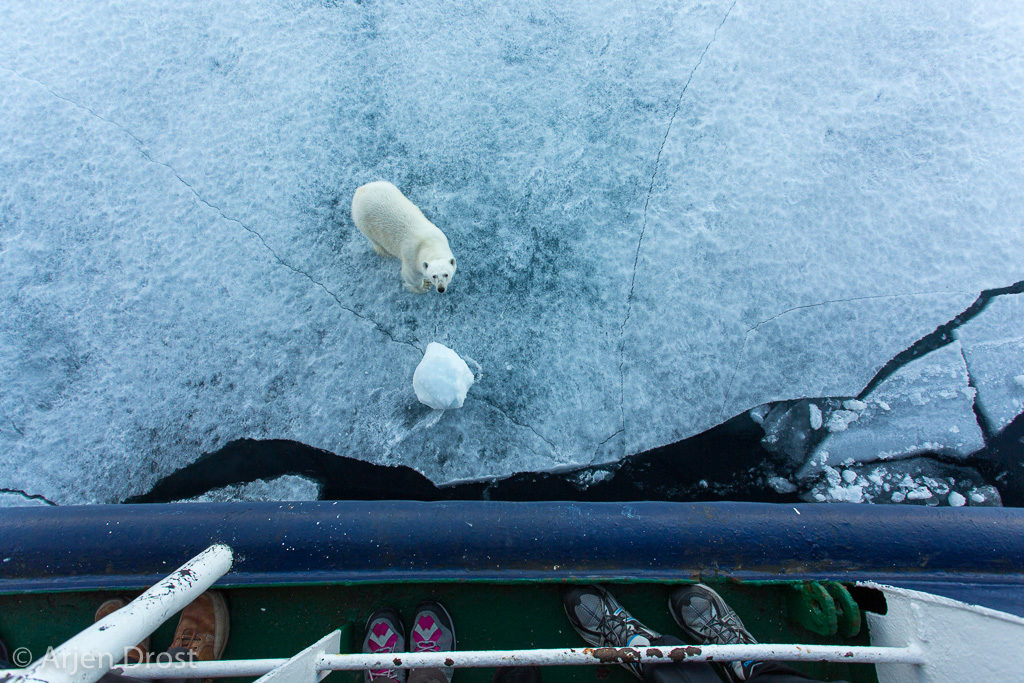
Curious bear
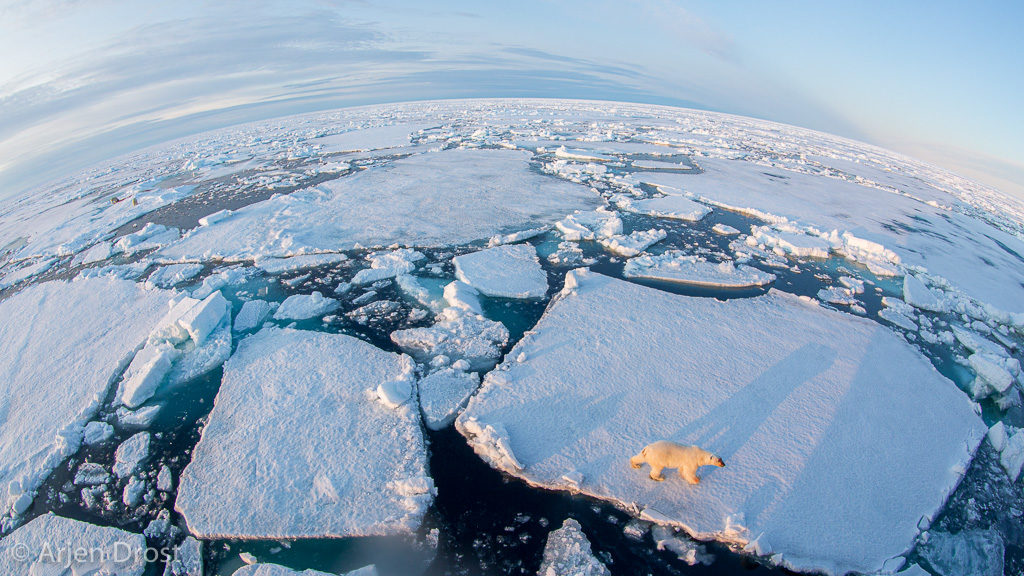
On top of the world
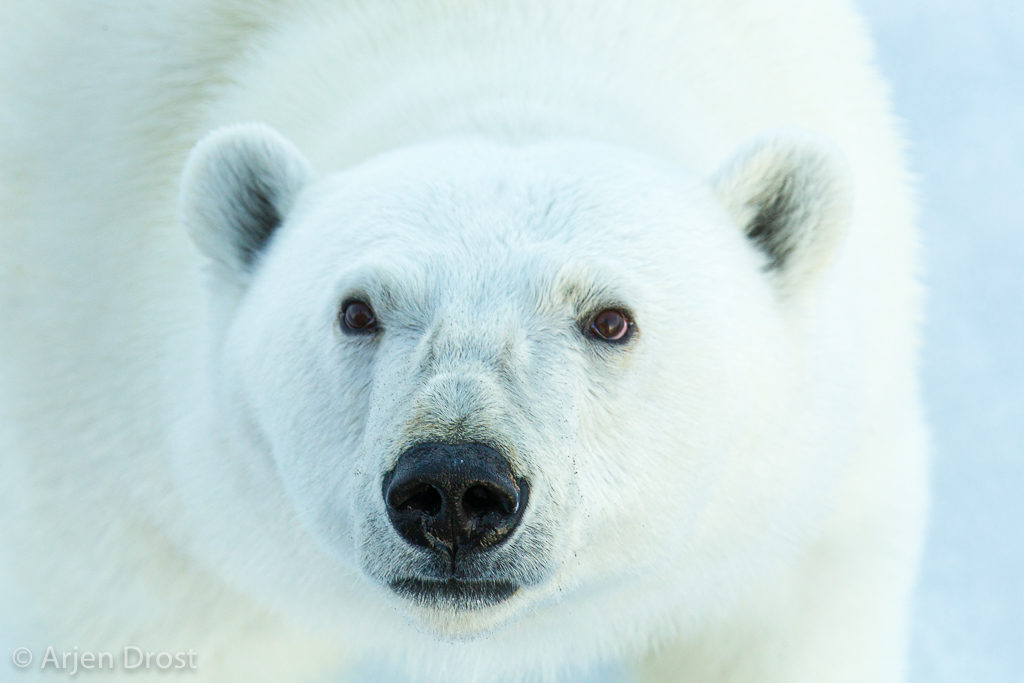
Close up
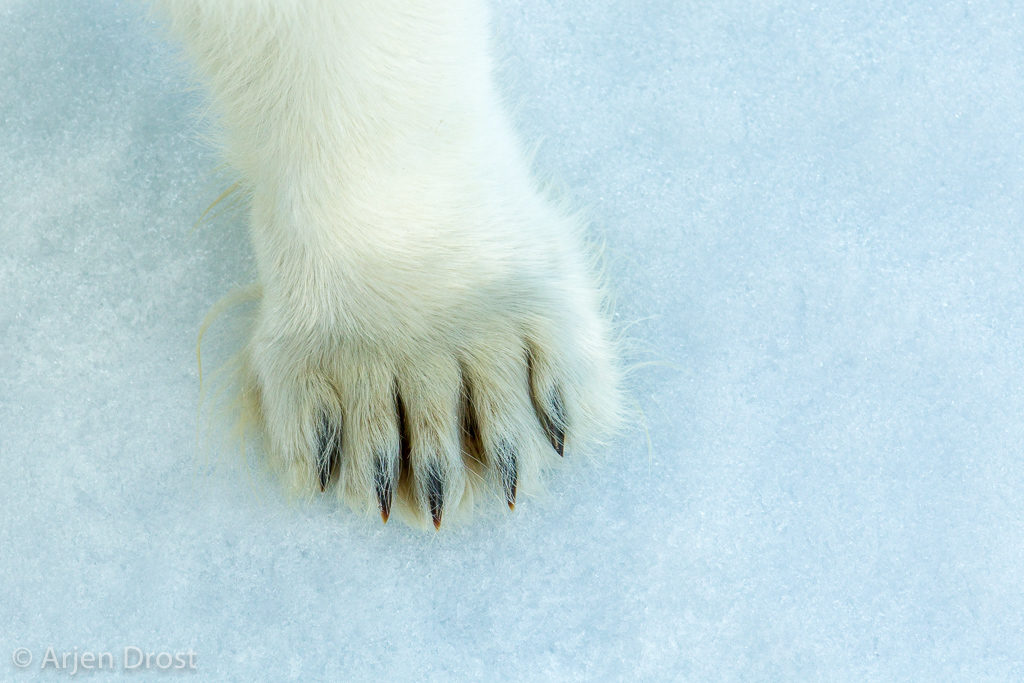
formidable weapen
Meanwhile, it was getting quite late, and more and more guests disappeared into their cabins. I can never get enough of a sight like this, so I stayed on deck for some more time. The midnight sun made the sky turn orange, giving a nice contrast to the blue colour of the ice. Not much was left of the seal, just a few bones, the skin and some intestines. In the 10 hours, we were present the bears had more or less eaten all. Soon they would take off in search for more food. Maybe meeting each other at the next kill, perhaps never seeing each other again. The following day we would also leave, continuing our way through the ice and around Spitsbergen. A few more pictures of bears under the midnight sun and I’m also off to bed. Ending a day that I wish would never stop, but I have to be awake the next day for more experiences… In bed, I have to write my feelings down a little. The quote below was my summary of that day, written just before I fell asleep, grateful that I’ve got a job that allows me to experience these things and share them with others.
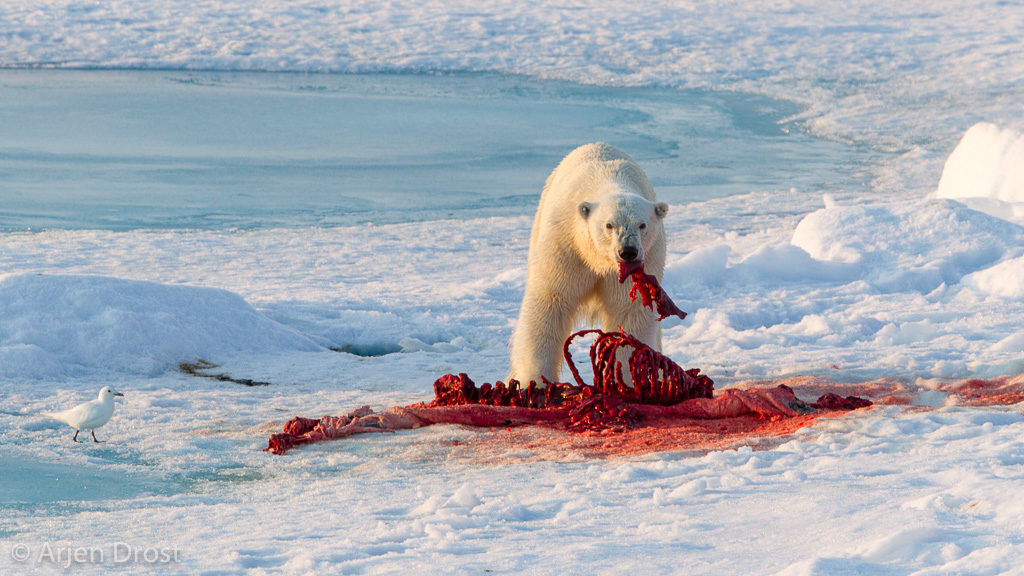
Eating the left-overs
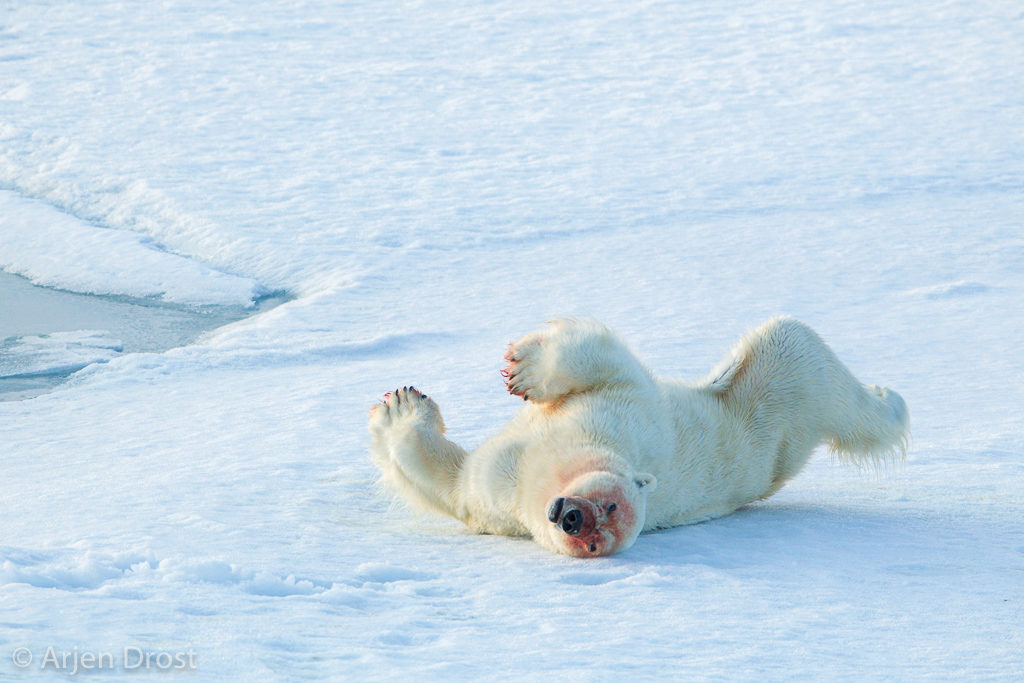
Cleaning the fur
Wow!
Sometimes that’s all one can say… Here I am, sitting on the stern deck in the midnight sun. I’m listening to Ilse deLange while I still see three Polar Bears resting next to the remains of what once was a seal… Today was definitely one of my best days in the Arctic, ever. Beautiful sunshine, nice ice everywhere, 12 different bears, a group of 28 Ivory Gulls, several Pomarine Skua’s and 3219 pictures. We parked the ship next to a fresh kill shortly after lunch and never left. It was great to see all different sorts of behaviour, dominant males chasing younger ones, males sharing food, males threatening each other. And all this with spectacular light, that became even nicer as the evening progressed. I’ve used nearly all my lenses, from the 8-15mm fish eye, to more scenic shots with the 17-40mm and the 70-200mm to close-ups with 600mm… Days like this are a very important reason for me to be a guide. Experiencing this and sharing these experiences with my fellow travelers.
WOW!
Before I go to bed I just need sometime to process all these experiences. I’ve packed my camera’s away and am just sitting here, in the midnight sun with a little music. Such a great ending of such a great day, I almost get emotional…
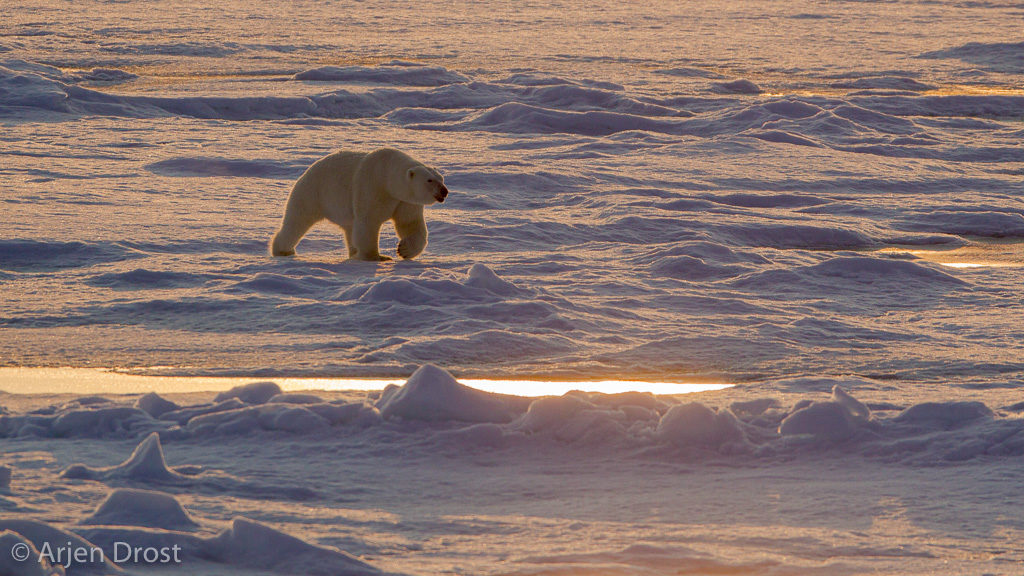
A late night arrival
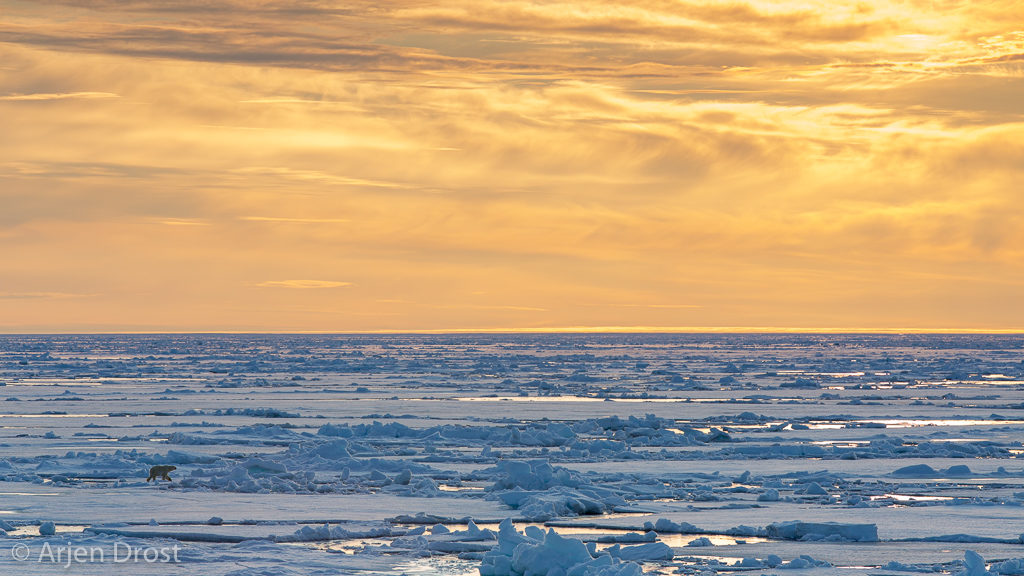
A farewell to a wonderful day